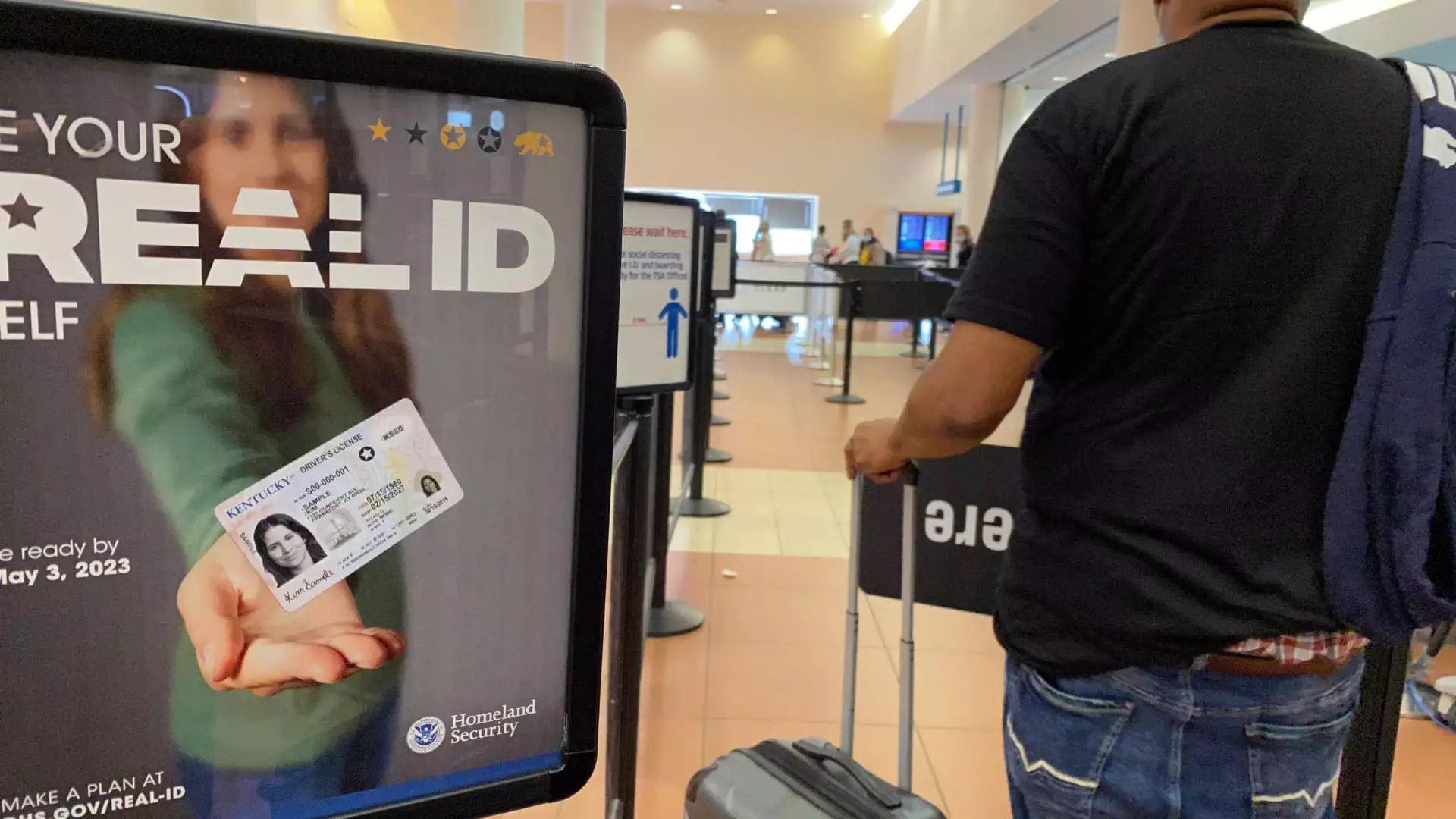Starting May 7, travelers in the United States will need to face a pressing reality: the enforcement of Real ID requirements at airports is finally happening. This isn’t just another government announcement destined to be postponed indefinitely; this is a moment that could significantly affect your travel plans. The growing urgency surrounding this policy stems from ongoing security concerns, following the tragic events of September 11, 2001, which revealed critical weaknesses in our identification systems. Citizens must now adapt to this new standard or risk being left behind at security checkpoints.
The Real ID Landscape
Before diving into the minutiae of these changes, it’s crucial to grasp the context. 81% of travelers already possess Real ID-compliant identification, but this statistic can be misleading. The variance in compliance across states raises questions about accessibility and the overall effectiveness of this initiative. While joining the compliant 81% should be a simple task for some, for others, it induces unnecessary chaos. States have become overwhelmed with requests, and appointments are being booked up rapidly, prompting officials to urge citizens to act expeditiously. This frenzy is indicative of a broken system where the government could have acted more proactively to ensure a smoother transition.
Unpacked Requirements and Realities
To comply with these requirements, travelers must possess a government-issued piece of identification that carries explicit markings indicating that it meets federal standards. States had ample time since the Real ID Act passed in 2005 to ensure that citizens were informed and prepared. Yet here we are, with an impending deadline looming over us, forcing last-minute scrambles that are unnecessary and frankly, unjust. Those who do not attain a compliant ID before the deadline have alternatives like a U.S. passport or a permanent resident card, but let’s be real: who wants to dash at the last minute to figure out an alternative when they could have had adequate notice?
The promise of an enhanced ID could have provided a viable solution for many; instead, it has created confusion. The Department of Homeland Security notes that many travelers will likely face additional scrutiny. Forcing people to arrive several hours early, just because they lack this special ID, utterly derails the travel experience. The government’s insistence on strict rules without corresponding efforts to ease the transition feels punitive, a bureaucratic overreach at play.
Impact on the Travel Experience
The painful irony here is that these security measures, intended to create a safer travel experience, actually end up transforming it into a heightened state of anxiety. Travelers navigating through bustling airports are already dealing with fatigue, long lines, and the unpredictability of flight schedules. Now, they must also contend with a new layer of obligations and requirements that could undo months of planning for their trips. The home stretch of the journey should bring excitement, not apprehension about being turned away at the checkpoint.
John Essig, the TSA’s federal security director for New York City-area airports, recently urged travelers to secure their appointments immediately. This disclaimer is little more than a reactive band-aid that fails to address the broader issue of adequate preparedness. Why should it take significant public discourse and scattered reminders to get individuals ready for something that’s been on the horizon for nearly two decades?
A Critical Assessment of Government Accountability
All indications suggest that the government has dropped the ball in refining this process. Since the inception of the Real ID Act, there has been ample opportunity to implement an effective communication strategy that reaches every American traveling within the country. Instead, we are faced with the consequences of a delayed rollout coupled with an apathetic approach to information dissemination. The loud alarms now ringing in our ears highlight profound inadequacies in our long-term planning and execution.
This sense of frustration is not merely about securing an identification card; it’s emblematic of a larger issue: a government system that often fails its citizens by adding layers of complexity where simplicity could reign. The looming May deadline serves as a crucial reminder of the importance of effective governmental practices and transparency in dealing with matters that directly impact everyday lives. If these processes and communications had been handled with foresight and urgency, we wouldn’t be facing the chaos we see today.
The Real ID experience is less about safety and more about managing a governmental process that has ostensibly lost touch with the needs of the public. Yet again, we are left to navigate a bureaucratic maze designed without adequate consideration for individuals caught in its web.

